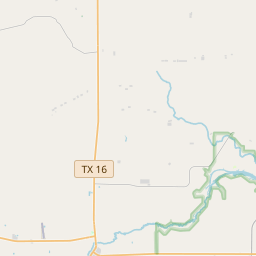Site of Three Rivers Glass Factory
Historical marker location:












Opened 1922 by company headed by Charles R. Tips (b. 1892), the founder of town of Three Rivers. Powered by local natural gas, plant used quartzose sand mined in area to make glass bottles for milk and other beverages and jars for food and cosmetics, attaining annual gross sales of a million dollars. Sold in 1937 to Ball Glass Company, it was closed in 1938, but had shown Texas potential in the industry. In later years, factory site became location of a warehouse. Glass with Three Rivers cipher is highly prized by collectors
As one of the most visible programs of the Texas Historical Commission (THC), historical markers commemorate diverse topics in Texas history, including: the history and architecture of houses, commercial and public buildings, religious congregations, and military sites; events that changed the course of local and state history; and individuals who have made lasting contributions to the state, community organizations, and businesses.
The first oil well in the United States was drilled in Texas in 1859. The discovery of oil transformed the economy of the state and helped to make Texas one of the wealthiest states in the nation.
In the early 18th century, Spanish explorers began to venture into the area, searching for new territories to claim. It wasn't until the early 19th century when Anglo-American settlers arrived in the area. The Spanish government offered land grants to attract settlers, and many families moved to Live Oak County, establishing small ranches and farms. The region's fertile soil and mild climate made it ideal for agriculture, and cotton and cattle quickly became the mainstay of the local economy.
During the mid-19th century, Live Oak County witnessed significant growth and development. In 1856, the county was officially established, named after the live oak trees that were abundant in the area. By this time, more settlements had sprung up, and businesses flourished, including general stores, cotton gins, and blacksmith shops. The arrival of the railroad in the late 1800s further boosted the county's economy, allowing for easier transportation of goods and access to markets.
The early 20th century brought challenges to Live Oak County, as the agricultural sector faced disruptions due to drought, the Great Depression, and changes in farming practices. However, the discovery of oil in the early 1940s brought a significant economic boom, transforming the county once again. Oil companies flocked to Live Oak County, bringing jobs and prosperity to the area. The oil industry continues to be a vital part of the county's economy to this day, alongside agriculture and other industries.
Live Oak County Timeline
This timeline provides a condensed summary of the historical journey of Live Oak County, Texas.
- 1846 - Live Oak County is established as a separate county by the Texas legislature.
- 1848 - The county is officially organized.
- 1850s - The population begins to increase due to the establishment of ranching and farming operations.
- 1881 - The San Antonio and Aransas Pass Railway is completed, connecting the county to other parts of Texas.
- 1890s - An oil boom occurs in the county, leading to increased economic activity and population growth.
- 1920s - The oil industry experiences a decline, leading to a decrease in population and economic slowdown.
- 1930s - The county is heavily affected by the Great Depression, with many residents facing unemployment and poverty.
- 1940s - The end of World War II brings an economic boost to the county as industries begin to recover.
- 1970s - The county experiences another oil boom, leading to increased oil production and economic growth.
- Present - Live Oak County remains a primarily rural area, known for its agriculture, oil production, and outdoor recreational activities.